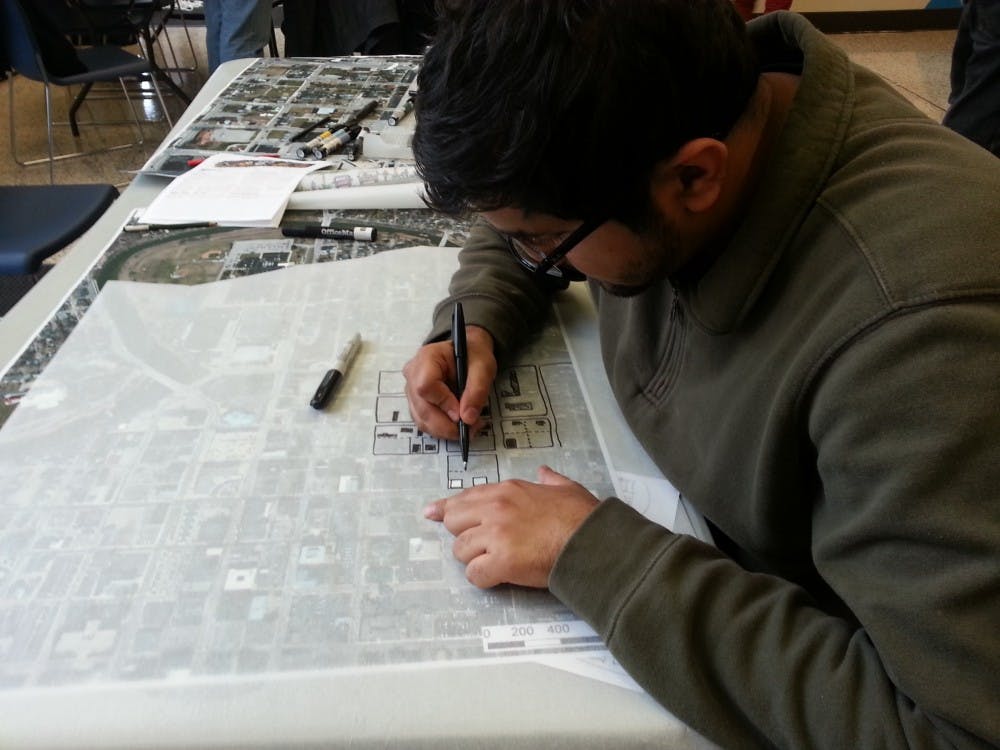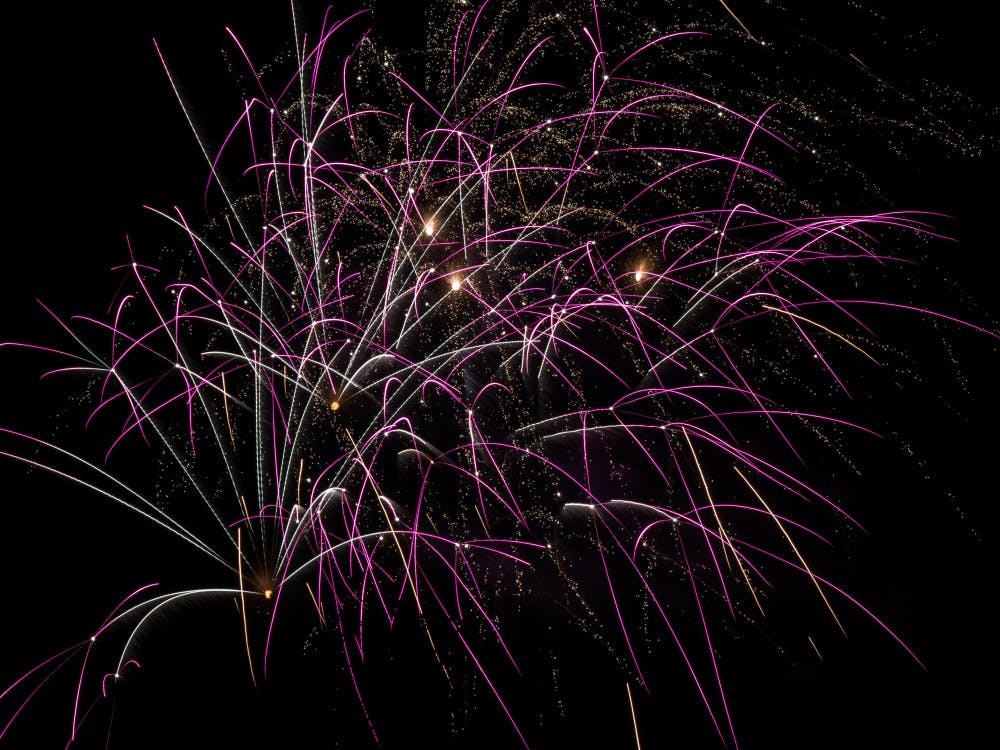What is a Makers District?
- A co-working space for creators and inventors
What does that mean?
- A “maker” purchases and renovates a space
- They live and work in that space to create
- The maker also trains those interested in their craft
Why?
- To offer a place for inventors and artists to work
- To entice Ball State graduates to stay in Muncie
- To educe the number of old, abandoned houses
Source: Scott Truex, Ball State associate professor of urban planning
• Ball State graduate students work with community members to enhance a blighted neighborhood.
• The new Maker District would contain several live-work areas.
• A university professors and project leader says this will help keep graduates in Muncie.
Ball State graduate students look to redesign a blighted downtown neighborhood into a hub for local “makers.”
Last week, community members, national redevelopers, business leaders and Ball State urban planning graduate students met to pull together proposals to transform the six-block area in the Goldsmith C. Gilbert Historic District.
The Maker District would house workshops and resources for local creators to hone their skills and incubate ideas for potential businesses.
“We’re hoping this brings more options to bring vocational skills back,” said Scott Truex, an associate professor of urban planning.
Truex said enriching the community and keeping it alive in the long term is one of the project’s driving causes.
“The idea is how do we make Muncie more livable and a place I can graduate and find a job?” Truex said. “Maybe you get involved as a student and you go, ‘This is cool, I want to stay involved in a business.’ Or we give you a space, and you’ve got an idea, and you can nurture that idea.”
Since buildings in the area could not be torn down, students have to be creative in using spaces that are already available.
“There are some historic properties that can’t be torn down, they have to be renovated,” said Contos. “Something is going to happen and something needs to happen, so why not give it an identity?”
Truex said Ball State has the potential and resources to transform the Muncie community while benefiting students.
“What if Ball State really got serious about partnering with the city of Muncie and did something? Instead of doing [immersive learning] on campus, we can do it in the community and it benefits a broader base,” Truex said. “We’re not an island. That would be true immersive learning. Not just sending students out and gathering them back, but actually investing in the community.”
The plan for the district originally started off as an art and culture area to address the problems of vacant and blighted homes in the area, but evolved into a co-working space for creators and inventors.
“We thought live-work [creators living and making in the same house] is a great idea for Muncie because we have so many maker-type people coming out of Ball State and the history of Muncie being manufacturing people who have done tool-and-die making for years,” said Sherri Contos, director of the Muncie Arts and Culture Council.
Truex said the idea for the Maker District was inspired by a nationwide trend of do-it-yourself, community workshops.
Around Indianapolis, there are two similar places including Launch Fishers, a co-working space for entrepreneurs working on start-up businesses, and Developer Town, a design and development firm that helps entrepreneurs create web and mobile products.
Four teams of Ball State graduate students in the urban planning department have been working on design solutions for the Maker District during the past few semesters.
“We have a good location between the high school, downtown and the university,” said Turki Alhedr, an urban planning graduate student. “There are a lot of vacant buildings and vacant land, so it is a good opportunity to develop.”
James Reinhart, an urban planning graduate student. and his team proposed creating a new pedestrian bridge that would go to Muncie Central High School over the White River.
Their plan also features ways to increase local food production for local businesses using hydroponics and increasing access to downtown.
Reinhart said the hope is to make getting to the center of city as easy as possible.
Even with many proposals, the project still has obstacles to conquer.
“This is a transition of trying to get people to understand it,” Truex said. “A lot of our challenge is to introduce the ideas and help shepherd an understanding.”
Aside from awareness, the project also needs financial backing, Alhedr said.
“We went through many examples from other cities around the United States,” he said. “We got a pretty good idea, but at the same time it needs community support and community engagement to do this, a well as the financial aspect.”
Students will present their final ideas to the public on April 24 at Inside Out in downtown Muncie.





